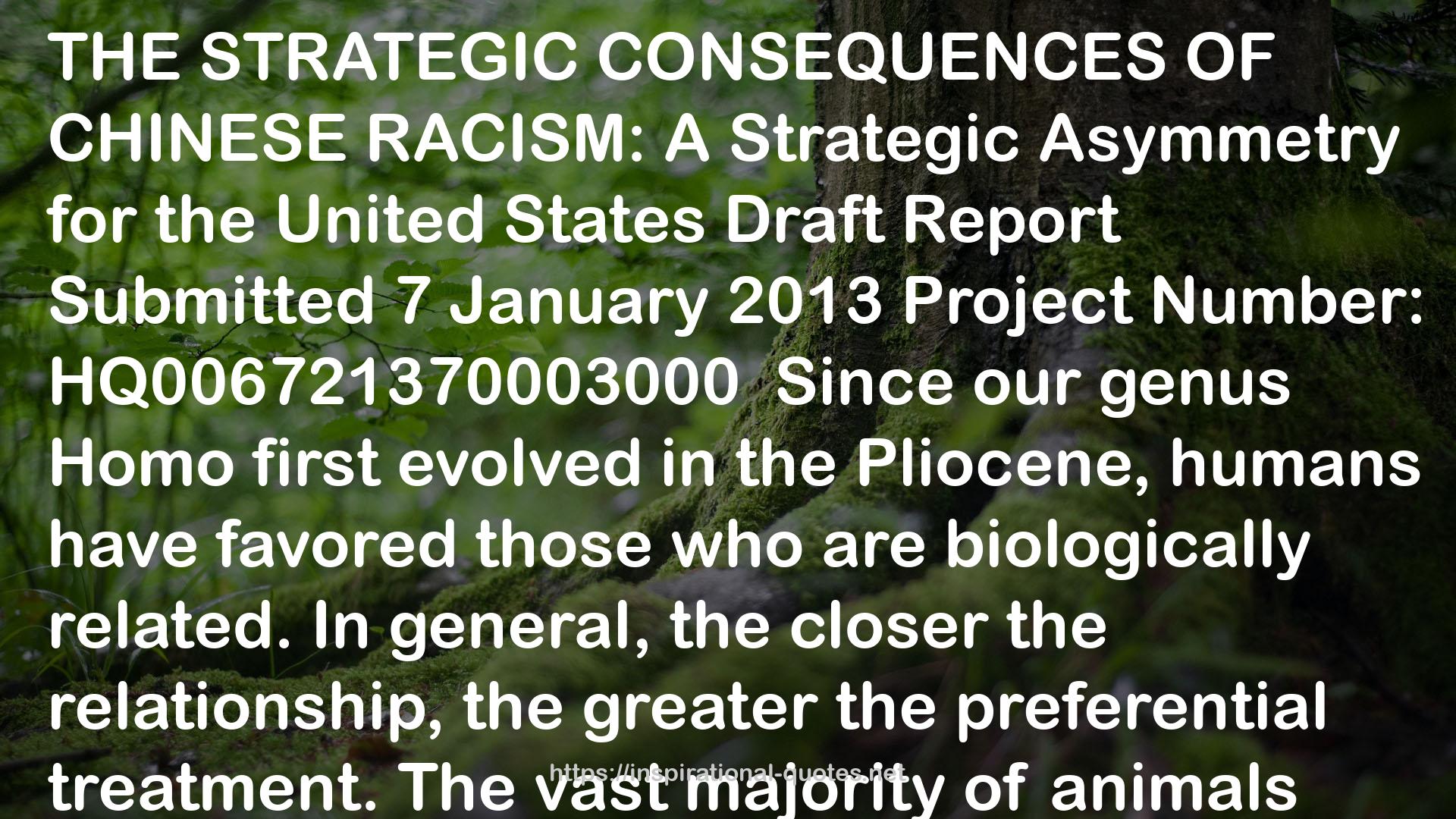" THE STRATEGIC CONSEQUENCES OF CHINESE RACISM: A Strategic Asymmetry for the United States
Draft Report
Submitted 7 January 2013
Project Number: HQ006721370003000
Since our genus Homo first evolved in the Pliocene, humans have favored those who are biologically related. In general, the closer the relationship, the greater the preferential treatment. The vast majority of animals behave in this way, and humans are no different. In a world of scarce resources and many threats, the evolutionary process would select nepotism, thus promoting the survival of the next generation. However, this process is relative. Parents are more willing to provide for their own children than for the children of relatives, or rarely for those of strangers.
The essence of an inclusive fitness explanation of ethnocentrism, then, is that individuals generally should be more willing to support, privilege, and sacrifice for their own family, then their more distant kin, their ethnic group, and then others, such as a global community, in decreasing order of importance. ...
The in-group/out-group division is also important for explaining ethnocentrism and individual readiness to kill outsiders before in-group members. Irenäus Eibl-Eibesfeldt draws on psychologist Erik Erikson’s concept of “cultural pseudo speciation,” and says that in almost all cultures humans form subgroups usually based on kinship; these “eventually distinguish themselves from others by dialect and other subgroup characteristics and go on to form new cultures.” ...
When an individual considers whether to support a larger group, several metrics are available. One of these ... is ethnocentrism, a continuation of one’s willingness to sacrifice for one’s family because of the notion of common kinship. As I discussed above, the ways humans determine their relations with unrelated individuals are complex, but the key factors are physical resemblance, as well as environmental causes like shared culture, history, and language. ...
I have shown that in-group/out-group distinctions like ethnocentrism and xenophobia are not quirks of human behavior in certain settings. Instead, they are systematic and consistent behavioral strategies, or traits. They apply to all humans... They are widespread because they increased survival and reproductive success and were thus favored by natural selection over evolutionary history. ...
Chinese racism ... is a strategic asset that makes a formidable adversary. ... The government educates the people to be proud of being Han and of China. In turn, the Chinese people are proud and fiercely patriotic as well as ethnocentric, racist, and xenophobic. This aids the government and permits them to maintain high levels of popular support. ... "
―
Image for Quotes

